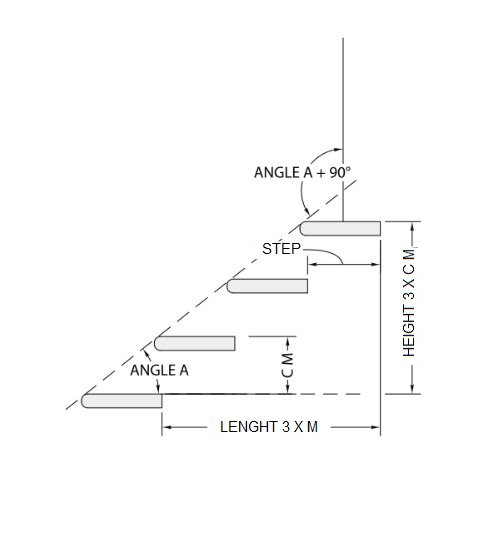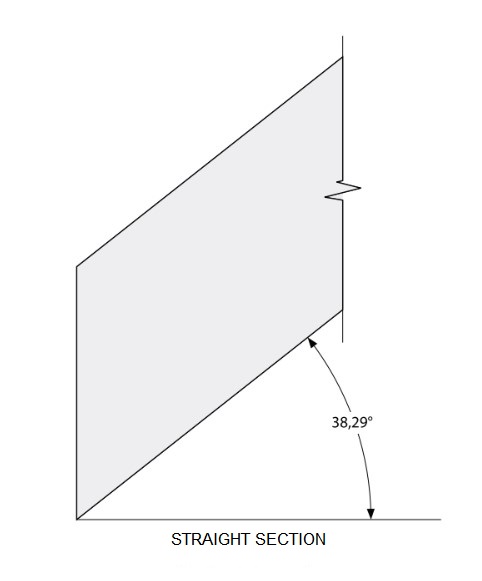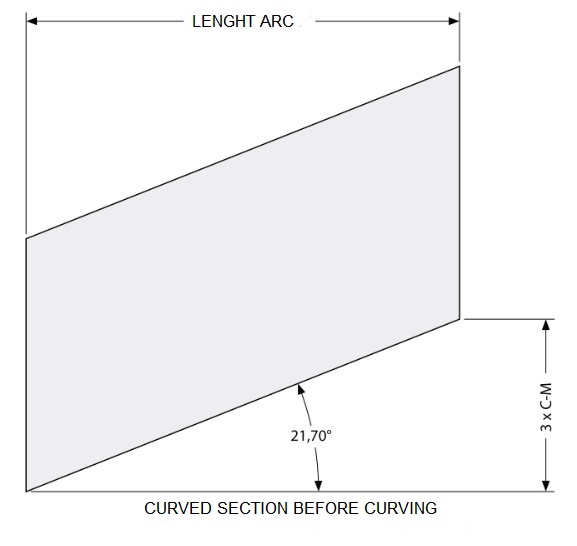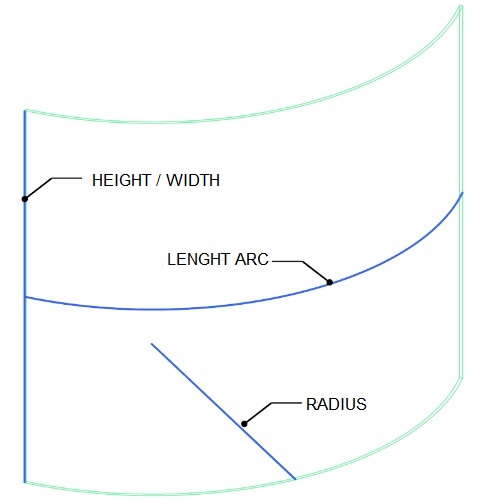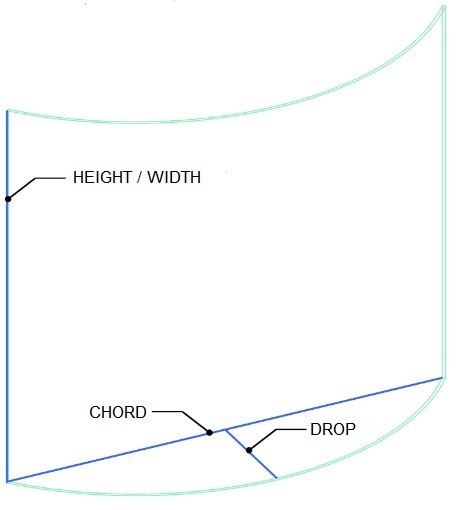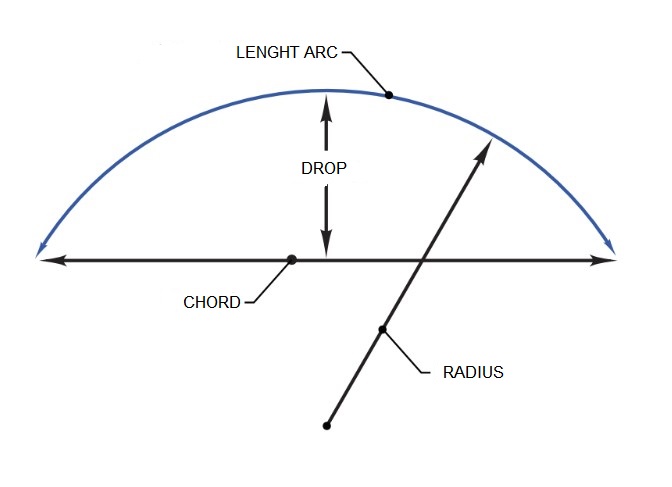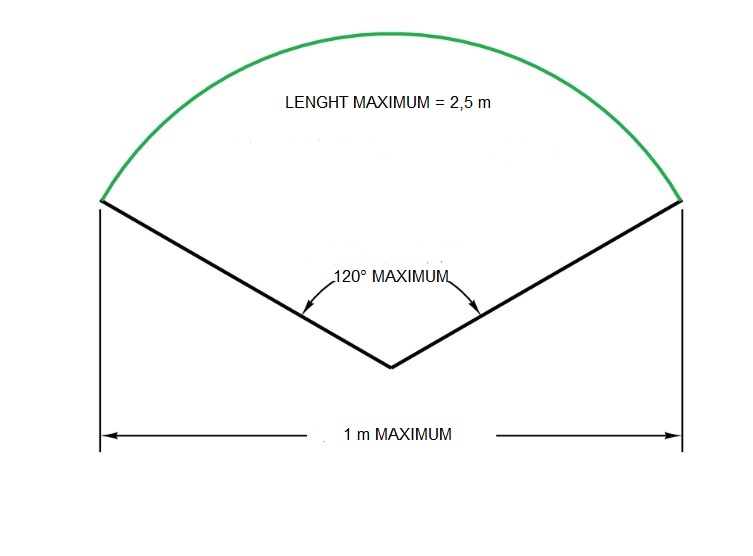Parallel pieces of glass are mainly used for stairs and each piece of glass must follow the slope of its section. However, the angle of a straight section will be different from that of a curved section. The angle varies according to the depth of the
step and the height of the riser. The steps of a curved section widen towards the outside, but the riser’s height remains the same. You therefore need to use the arc’s length rather than the step’s depth. Thus, the slope in a curved section will be less than in the straight section.
The illustration to the right is schematic and does not show the staircase posts. The proportions are based on a 9 1/2″ step with a 7 1/2″ riser in a straight section.
In the example below, the length of the arc is twice as long as a straight step.
The necessary specifications are the same as those of regular curved glass, i.e.:
- arc length, height/width, and curve radius (plan view).
- or, where the radius is not known, the lengths of the cord and the rise (depth) must be provided. A template with all the dimensions indicated above is required when the exact length of the radius cannot be supplied.

Unlike pieces of flat glass, shaped glass manufacturing requires very precise three-dimensional measurements of the desired shape.
Two methods of measurement are used to measure this type of shape.
A flexible tape measure is needed to measure the outer arc. Height/width, cord and rise (depth) are linear measurements and are taken from the convex (inside) of the curve.
A rigid template (water-repellent) with all the dimensions indicated above is required when the precise length of the radius cannot be provided.


